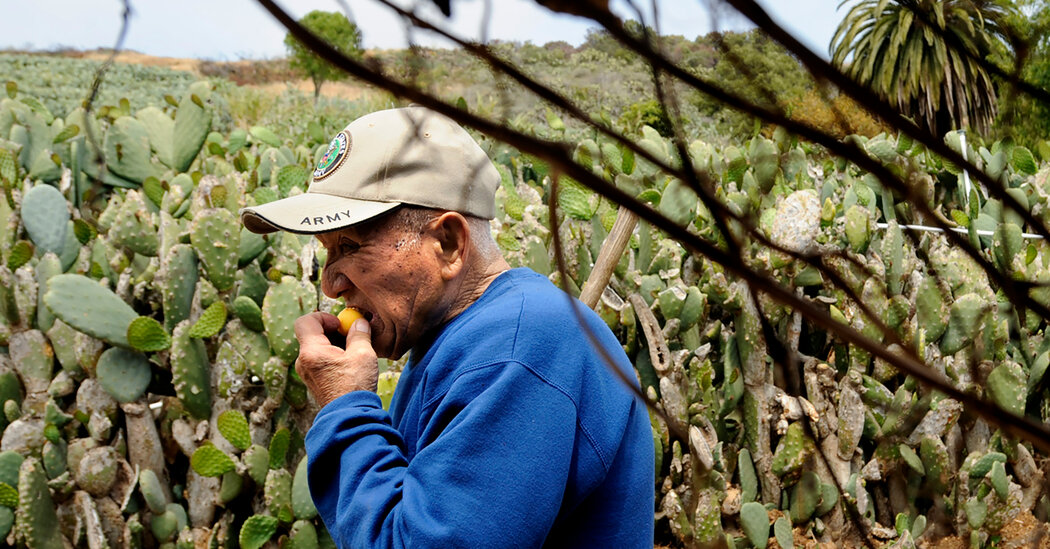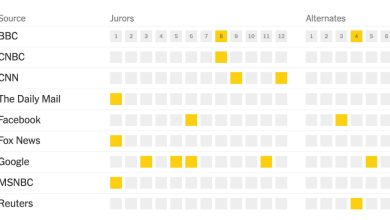
Preserving the Legacy of Japanese American Farms in Southern California

James Hatano, a U.S. Army veteran, secured a lease from the federal government in 1953 for the land in Rancho Palos Verdes.Credit…Wally Skalij/Los Angeles Times
RANCHO PALOS VERDES — On a hillside overlooking the Pacific Ocean in a wealthy community 30 miles south of downtown Los Angeles, a patch of land is the last vestige of a way of life that has otherwise disappeared.
Perched above a coastal highway and a luxury resort, the land, Hatano Farm, was once home to a 5.5-acre flower and cactus farm rooted in the Japanese American agriculture community that thrived in the Los Angeles area before World War II.
After city officials shuttered Hatano Farm last year, it won historical designation from the California State Historical Resources Commission, with the nine-member board voting in January to designate the farm as a point of historical interest.
But the future of the city-owned property is uncertain, and city leaders are expected to make a decision by the end of the year.
On a recent afternoon, I hiked to the farm through patches of cactuses, agave and tall weeds where once there were rows of yellow sunflowers, orange poppies and blue larkspur. A gentle ocean breeze cooled the air. I passed an abandoned trailer and camper van, along with the rusted remains of farming equipment.
“It’s this very tucked-away, special place,” Monique Sugimoto, an archivist and local history librarian, told me. “It represents the last Japanese farm in the area. That legacy is important to preserve.”
Los Angeles County was once home to a large community of Japanese American farmers selling crops of flowers and vegetables grown on leased land. With its mild climate, the Palos Verdes Peninsula — now occupied by four small cities including Rancho Palos Verdes — was especially popular among farmers.
The community largely disappeared after the attack on Pearl Harbor in 1941, when people of Japanese heritage, many of them American citizens, were imprisoned in internment camps across the West for the duration of World War II.
“After the war, very few farmers came back,” Sugimoto said.“That had a huge impact. People had to restart their lives.”
Among those who did come back was James Hatano, a U.S. Army veteran who settled in the area and continued his family’s trade growing flowers, eventually securing a lease from the federal government in 1953 for the land in Rancho Palos Verdes.
Farming with limited irrigation, Hatano sold his colorful harvest at a bustling flower market in downtown Los Angeles and to float decorators at the Rose Parade in Pasadena.
The farm is near a former missile site — its concrete bunkers are still there — and ownership of the land was transferred to the city after the missile site closed in the 1970s. Hatano kept operating the farm through a series of lease agreements, ultimately paying the city $100 a year for the land.
After Hatano died in 2015, a longtime foreman on the farm, Martin Martinez, took over operations. But a commercial farm wasn’t among the approved uses when the property was transferred to the city. Martinez was evicted from the property last August, according to the news outlet The Daily Breeze.
“There was a strong reaction from the community,” Megan Barnes, a city spokeswoman, said. “Most residents understood the city was in a tough spot.”
City officials are soon expected to consider Hatano Farm’s next chapter, and they will probably install a plaque commemorating the farm and its history. Officials remain in contact with Martinez, Barnes said.
Proposals include an educational center that would recreate a working farm, or a seed garden to repopulate plants native to the area. Highlighting Hatano’s legacy will be essential, David Bradley, a Rancho Palos Verdes councilor, said.
“Hatano Farm is an important contribution in honoring what Japanese American farmers did for the community,” he said.
The rest of the news
-
Writers’ strike: More than 11,000 unionized screenwriters could head to picket lines in Los Angeles and New York as soon as Tuesday.
-
Diesel truck ban: California state regulators on Friday approved a ban on the sale of new big rigs and buses that run on diesel by 2036.
-
Wildfires threaten hospitals: A recent study found that 95 percent of California’s hospitals, nursing homes and mental health facilities are within just 3.7 miles of a high fire threat zone, The Washington Post reports.
-
Seismic inflation: Rising property values, aging buildings and soft soils mean a higher price tag on earthquake damages, The Los Angeles Times reports.
SOUTHERN CALIFORNIA
-
Doorbell ditch murder: A California man who crashed his car into a vehicle with six teenagers, killing three of them, after they played a doorbell ditch prank at his home in 2020 has been convicted of murder.
-
Disability rights: A lawsuit finds San Diego County jails are unsafe for people with disabilities and are noncompliant with the Americans With Disabilities Act, The San Diego Union-Tribune reports.
-
Earthquakes: A magnitude 4.3 earthquake struck the Imperial Valley late Saturday evening, followed by several aftershocks of similar magnitude, Fox40 reports.
CENTRAL CALIFORNIA
-
Yosemite reopens: As flooding concerns abate, parts of the Yosemite Valley that were temporarily off limits are set to fully reopen Monday morning, The Associated Press reports.
NORTHERN CALIFORNIA
-
Whole Foods: Whole Foods Market made a bet on a gritty San Francisco neighborhood last year. In April, the store closed, citing threats to the safety of employees. Many saw the closure as representative of the city’s slump, which could continue for years as companies vacate offices.
-
Conservation: The Yocha Dehe nation and local environmentalists are petitioning the Biden administration to extend federal protection to Molok Luyuk, a rocky ridge with more than 30 rare botanical species, The Guardian reports.
Where we’re traveling
Today’s tip comes from Ray Viola, who recommends a town on the Central Coast:
Tell us about your favorite places to visit in California. Email your suggestions to [email protected]. We’ll be sharing more in upcoming editions of the newsletter.
And before you go, some good news
In 2020, during the depths of the coronavirus pandemic, the de Young Museum in San Francisco opened an unusual, joy-filled exhibition.
The museum held a contest inviting artists from the nine counties in the Bay Area to submit paintings, sculptures and other pieces of artwork, and then picked hundreds of the best items for display. The show, the de Young Open, was wildly popular, offering a boost to artists who may have been struggling as well as a sense of community in an isolated time.
“Looking back, what was remarkable about it was that it really brought the whole museum together,” Thomas Campbell, director and chief executive of the Fine Art Museums of San Francisco, told The New York Times in 2021. “And it really gave us a connection with artists all over the Bay Area.”
Museum leaders decided to repeat the exhibition every three years, which means that the de Young Open is back.
In June, the museum will begin accepting submissions from Bay Area artists, and the show will open in September.
Thanks for reading. We’ll be back tomorrow.
P.S. Here’s today’s Mini Crossword.
Soumya Karlamangla, Briana Scalia, Jaevon Williams and Johnna Margalotti contributed to California Today. You can reach the team at [email protected].
.




